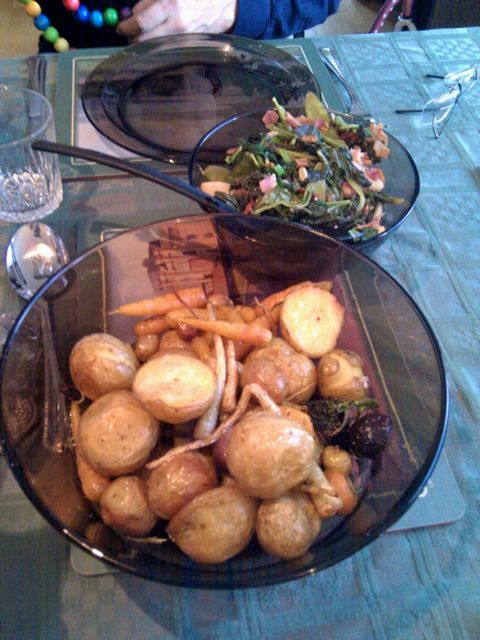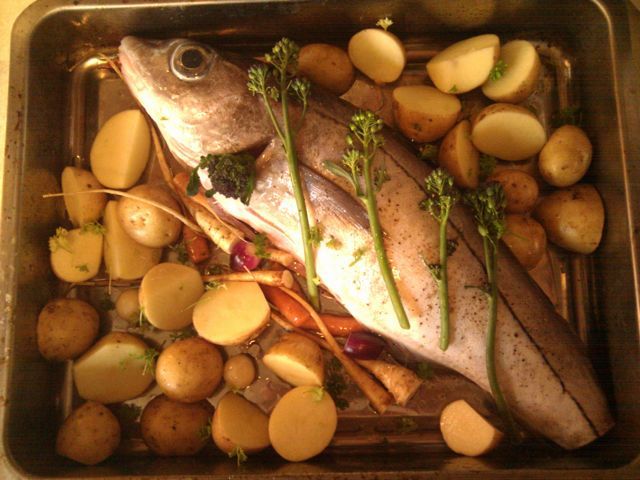Its Steinseljurót by the way.
And why am I so in shock about this not being a more adopted Icelandic vegetable? Its totally frost hardy that's why. Whereas most of the surprise at what I am growing here is because people didn't think it warm enough, this is a vegetable that is reputed to taste better once its been through a frost or two. Its so apt at coping with frost that I dug some up this spring which had stayed in the ground the entire winter and these were cooked and eaten with glee.
The only issue, which is something on my mind now, is that once the ground freezes properly here, there isn't a hope of digging the crop up until the spring. Its October, and the weather keeps dipping down, flirting with zero degrees, and then wacking us in the face with a 15 degrees here and there.
My garden contains quite a lot of parsnips still, they have been pulled through the last 2 months and eaten as varying sized baby veg for a roast but there are more left in the ground and I am playing chicken with Jack Frost. For safety I really had better pull them this weekend, parboil and freeze on my own terms in my already heavily stacked freezer.


The seed varieties I went for were Countess F1 and White Gem, both of which I am fairly certain you can buy here. In all honesty both varieties have performed well. I heavily sanded the area before planting and this year paid more attention to thinning the seedlings and just as Alan Titmarch always said, the results were infinitely better than my haphazard approach last year.
I planted 4 seeds per hole and then when thinning I removed the weaker, leaving the single strongest one to grow. This is one of the crops which hurts me when I thin it as you can't do anything productive with the thinnings. I much more enjoy this process when you can cook and eat the weaklings - as you can with cabbages as spring greens, turnip tops and young onions used as salad onions. Carrots and parsnips however just go straight to the compost. This is why I stubbornly held back on performing this process correctly last year and received thin underdeveloped - even if still tasty - parsnips.
The crop is a very slow grower, so you need great patience, as even growing as soon as the first frost as passed in spring and the ground is dig-able they take all the way until the first frosts arrive in winter. But they are sown in rows, fairly wide apart and leave space for quick maturing crops to grow in between such as baby carrots, spinach, radishes, turnips and more.
These are my favourite vegetable when it comes to eating. Roasted parsnips taste sweet and caramely and I have yet to meet an Icelander who hasn't loved them after tasting a slow roasted snip.

Summary:
Plant: March/April
Harvest: September/October
Soil: No organic matter the same season. Needs to be sandy/extremely well dug.
Problems: For me, none so far.
Maintenance: Zero apart from challenging any weeds.
Totally agree about parsnips!
ReplyDeleteI'm not sure that steinseljurót is parsnip though, I think it is parsley root which looks similar but doesn't have quite the same taste. In Danish the two are pastinak and persillerod.
Great site and it is amazing what you manage to grow!
Kate